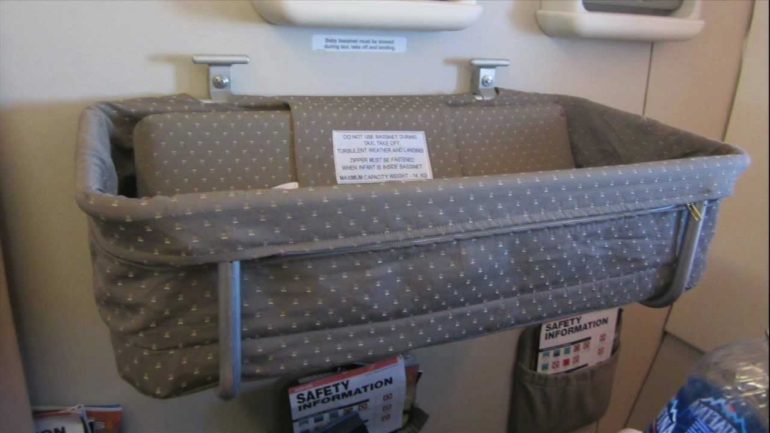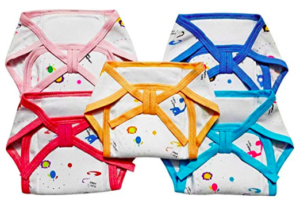Our little baby first flew when he was 2.5 months old — and boy, were we anxious! We had so many questions and could find no answers. Since then our little man has done more than 8 return flights — the longest being around 13 hours and the average length being around 3 hours. Hence, here are some tips for travelling with your baby!
At the airport
Does your baby require a ticket?
Yes, he does! While infants under the age of 2 can travel for free, you will have to buy a ticket for them and pay the related taxes. Usually this works out to be around Rs 1000 – Rs 1500 for a domestic flight.
What identification is required for your baby to enter the airport?
You need to show some form of government-approved identification for your baby to be allowed into the airport. Usually this is a birth certificate or passport.
Are strollers allowed on flight? Does it count as part of your 15 kg weight limit?
Yes, strollers or prams are allowed on flights. They do NOT count as part of your 15 kg limit. You have the option of either checking in the stroller with your luggage. Or you can carry it till the plane — leaving it at the gate when you board. Your stroller needs to be collapsible though.
If you choose to carry it to the gate, you will have to put the stroller through security (which can be cumbersome if you are travelling alone). The scanning machines aren’t the easiest to put a large stroller through when you are also carrying your baby and diaper bag / laptop bag. And if you have the misfortune of getting those horrible buses to the plane, you will have to carry your stroller onto that as well.
You will get your stroller back either on the luggage carousel, or some airlines give it to you as soon as you deboard.
Tips on strollers: We have 2 – Graco which is the sturdier but heavier one, and R for Rabbit which is very flimsy but light and easy to carry around. For Indian roads, you need sturdy strollers for sure!
Diaper changes
Baby changing rooms
Most domestic airports in major metros now have dedicated baby changing rooms. This is true for Delhi, Mumbai and Bangalore both in the departure and arrival areas. Most bathrooms also have a diaper changing table (the one that flips open). However, I would recommend locating the baby changing room as it far more convenient and comfortable for your baby.
The baby changing room generally has a washbasin and two small enclosures for either nursing your baby or doing diaper changes. The enclosures have 1 chair and a small padded table. It is best to change your baby before the flight.
Diaper changes on flights
It is not recommended to change your baby on the flight as it will be very cramped. Usually, most planes have 1 bathroom that has a diaper changing table. This folds out on top of the pot area. You will have to figure out where to put your wet wipes, diapers, diaper rash cream. It will be very difficult to change your baby here alone — it is best your partner sets up the changing table before you go in. Once you’re done, s/he can pack up. It is like an army operation!
Baby poopoo on flights
For our first 3 flights or so, Baby would invariably poop on the flight and would immediately want a diaper change. Sigh. I think it has something to do with pressure.
Milk Matters
Nursing
If you are nursing, it is best to carry a dupatta to cover yourself so that you can nurse on flight. The baby changing rooms are also intended for nursing mothers. Do not, however, hog a bathroom for 15 – 20 minutes on a flight and nurse your baby. We were on a plane where a mother did that once and she received irate looks from co-passengers.
Bottle feeding (pumped milk)
It is possible to carry breast milk quite easily on flights in India. It does not even have to be frozen. On my first flight, I carried 4 x 150 ml of milk both unfrozen and frozen in one of those cooler bags. You can tell the CISF guys at security that it is “baby ka doodh” and they don’t object.
On international flights, it is probably different so please check.
Bottle feeding (formula)
It is also very easy to carry formula milk on flights. I have been happily carrying a thermos of hot water (500 ml) plus a baby’s bottle of drinking water (300 ml) on all flights. No one objects in India.
On international flights, they are more strict about the 100 ml restriction on liquids. Here it is best you empty out your bottles prior to security. Once you’ve crossed security you can easily ask any of the restaurants for some hot water to refill your thermos.
On the flight
Take off and landing
Before taking off, the air hostess will come and tell you to feed the baby during take off and landing. This is not always true. If your baby is comfortable or asleep, don’t wake him or her up and force him to nurse. They recommend this so that the air pressure on flights doesn’t bother your baby. However, nowadays planes are pressurised quite comfortably.
Infant seat belts
Some airlines provide an infant seat belt that attaches to your own seat belt (Jet / Vistara). Other airlines, like Indigo, ask you to hold onto your baby.
Bassinets
There are very few Indian flights that have bassinets. This is true for all the budget airlines like Indigo, GoAir, Spicejet, so don’t even bother asking.
International flights have bassinets but they are tiny so don’t expect your baby to fit in after the age of 9 months or so. Also, when there is turbulence, you will have to pick up your baby and bring her to your lap.
Buying a child seat for your infant (seated on a car seat)
If you are going on a long-haul international flight, I would recommend buying a separate child seat for your infant. You can then put your car seat on the seat and have your child sit / sleep comfortably. This will also give you some rest. Your car seat needs to be approved for flights. The seat will have a tag somewhere that says this. You will have to show this to the air hostess. Most air hostesses, especially in India, are not aware of this. So please discuss it with the airlines prior to travel and inform the check in counter.
Sources of discomfort
Sources of discomfort (crying babies) are usually one of the following:
Pressure
Your baby may find it difficult to burp on the flight, so make sure you pat him properly. His ears may also be feeling the pressure, so nursing / feeding could help.
Diaper
Check the diaper. Babies can poopoo all of a sudden. Or the diaper could be wetter than normal.
Too hot or cold
Planes are usually too hot or too cold, so make sure that this is not the case for your baby.
Boredom
Planes are notoriously boring for babies. There really isn’t much to do and there is no rollicking rhythm of a moving car. Make sure you take your baby on walks. Our guy loved to entertain himself by playing with those seated around him.
That’s all I can think of now. You may also want to check out The Ultimate Newborn Baby Shopping List India (For Indian Mammas)
Let me know if you have any flight related questions — happy to help!



Hi, do you know if I can carry a car seat on Indigo ? And check in with the stroller as I can do in the USA? I am travelling from USA to India and will be doing a domestic trip within India but wondering what to do with the car seat.
Thank you for the detailed inputs. Lots of help. God bless.
How many weight can we carry of infants
It’s 7 kgs
Are we allowed to carry sterilizer in luggage?
Baby Walker is allowed in cabin or not
Really very helpful.
Thanks.
I need to travel to the US with my twins who are 1.5 years old. I’m struggling to find whether the Indian car seats (luvlap, R for Rabbit, BabyHug) are FAA approved and would be allowed on international flights. Secondly, I can’t find be any opinions or car seat comparisons from a travel friendliness long of view. Would appreciate any pointers. Thanks
After the first few days: Your formula-fed newborn will take from 2 to 3 ounces (60–90 mL) of formula per feeding and will eat every three to four hours on average during her first few weeks.In this technology era, the Internet has brought airfare searches to our fingertips; however, when you have to look at carrier tickets, the stunning measure of data accessible is overpowering. It’s frequently hard to tell which travel websites are the best or what strategies will yield the absolute best tools. Frequently the appropriate response relies upon what sort of tickets you are looking for.
Hello, I just booked my flight with my 5 months old son ,and I got to know that Id proof is necessary for him also, and I don’t have his birth certificate yet. can hospital discharge summary fullfil the requirement of of proof.
Hello, I just booked my flight with my 5 months old son ,and I got to know that Id proof is necessary for him also, and I don’t have his birth certificate yet. can hospital discharge summary fullfil the requirement of of proof.
Thanks for the insights on air travel with infants, especially for travelling in India! It helped 🙂
Can we carry baby lotions and creams more than 100 ml ??
Very useful! Thank you! Especially the part about strollers. I’m traveling alone with my baby and was debating whether or not to take the light stroller along. Deciding not to
Thanks for sharing your experiences.
Thanks man, this helps a lot.
Thank you for this! I was looking for a comprehensive guide of to-dos for traveling with infants. I think I am ready to travel now.
So happy to hear this was useful for you!
Hi, I am planning my first solo flight with my 5 month old. My husband and I searched for some tips online to prepare ourselves for it and we came across your article. We loved it and read it together. It has answered all our questions from can we take stroller in flight? to napping changing ? and breastfeeding during take off etc…
Hi- i am flying with my 5 m old baby on a 3 hr flight. I was planning to carry car seat so i can keep the baby on it during flight if need be but i dont have a separate seat booked. Can i carry the car seat and place in front of my leg on flight ? I have indigo and spicejet airlines booked.